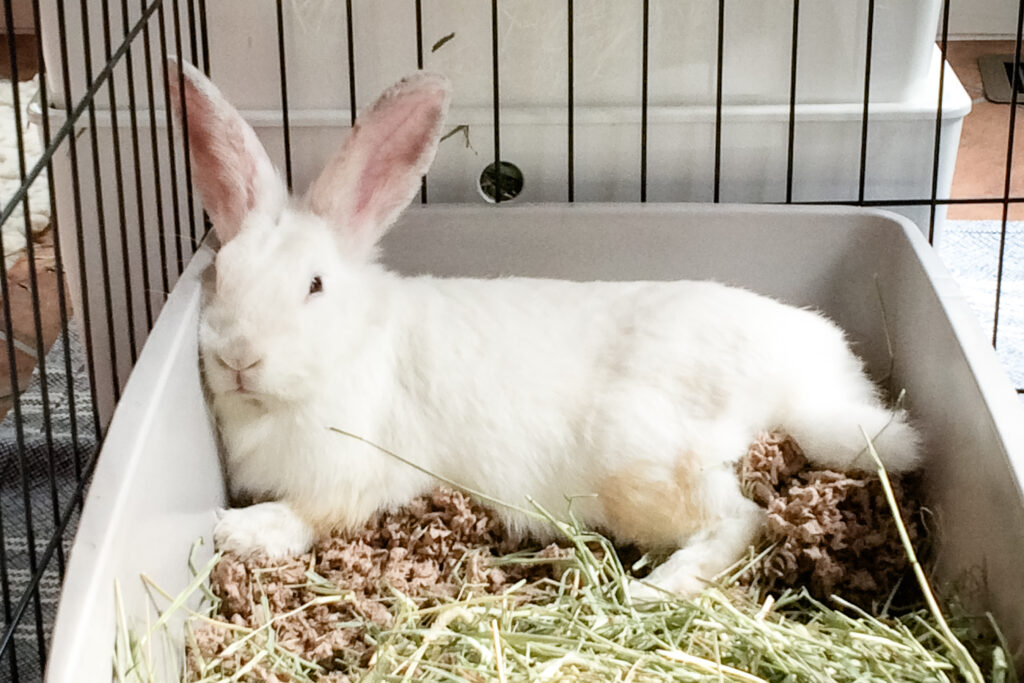As bunny matures and carves out his own territory, his regular use of litterboxes should be a natural evolution of what he wants to do anyway. If your bunny is not becoming self-trained, you may be giving too much space too soon. Or you may not be making the litterbox(es) enticing enough. Good toilet habits may take several weeks or months to achieve, depending on maturity.
Don’t expect a perfectly housetrained bunny at six weeks old. Even youngsters with well-established litterbox habits may lose them when they reach adolescence and become hormone-driven until after their spay⁄neuter surgery.
Post-adolescent spayed or neutered rabbits are generally easier to house train because they’re more inclined to settle into a routine. Older rabbits have often disproved the notion that a rabbit must be young to be trainable.
A transitory loss of training may occur when introductions are taking place and courting rabbits are trying to impress each other. After they are well acquainted, they regain their former habits. Rabbit routines that do not include some degree of good toilet habits may indicate a health problem.
LITTERBOX MAINTENANCE
Your own routine will include litter cleanup. Safe litters for rabbits are made from relatively benign materials such as paper fiber, mountain grasses, wheat, and specially processed woods (with reduced phenols). You can find them listed on the HRS website.. Avoid highly aromatic softwood shavings (indicating high phenols), as well as clumping litters and dusty clays. Even litters that are known to be nontoxic can cause internal damage and should not be ingested.
Litters may vary, but there are basically three options for filling a litterbox:
1. Newspaper lining (about eight single sheets) is covered with a three-inch layer of hay or straw.
2. Litter lining (one–two inches of litter) is covered by two–three inches of hay.
3. Litter or shredded paper is used alone, but an enticing treat or toy is added in one corner.
The third option is the most desirable during times of hay shortages, such as droughts or floods.
Paper-lined boxes that do not contain absorbent litter will need to be changed daily; the litter-lined boxes can go two days or more. For boxes shared with cats, keep any hay in a hanger or basket instead of on the floor of the litterbox. The way you manage litterboxes in your house will depend on the users.
©Copyright Marinell Harriman. All Rights Reserved. Republished with the permission of the author.
Natural Routines: Litterboxes was originally published in House Rabbit Handbook (5th ed.).

